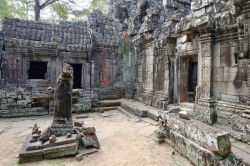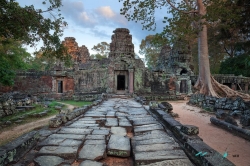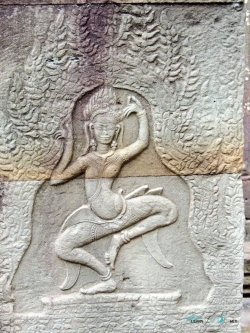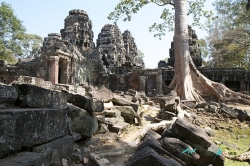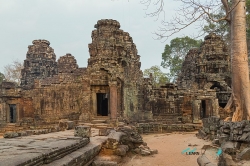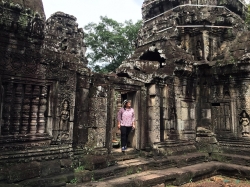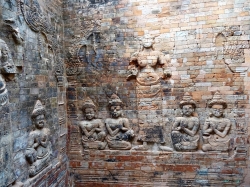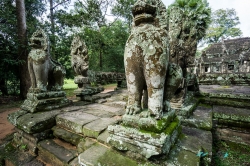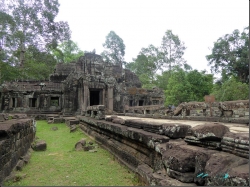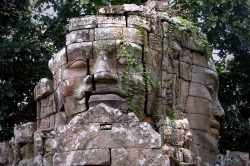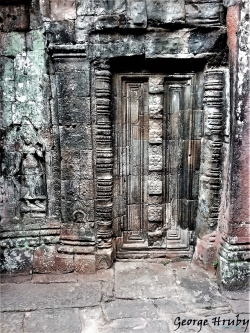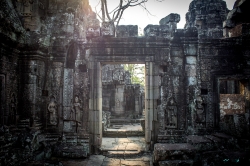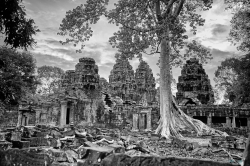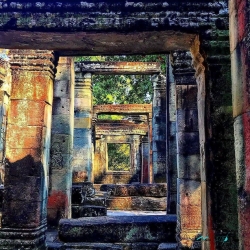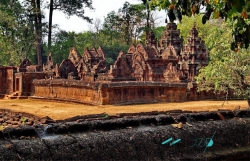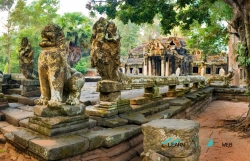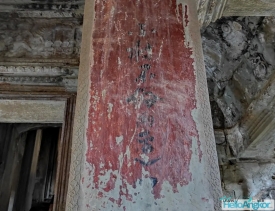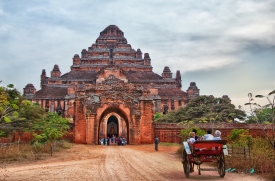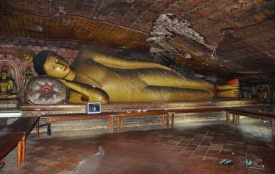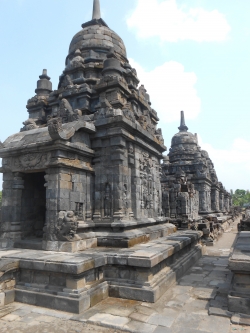ABOUT Banteay Kdei
Banteay Kdei (Khmer: ប្រាសាទបន្ទាយក្តី; Prasat Banteay Kdei), meaning "A Citadel of Chambers", also known as "Citadel of Monks' cells", is a Buddhist temple in Angkor, Cambodia. It is located southeast of Ta Prohm and east of Angkor Thom. Built in the mid-12th to early 13th centuries AD during the reign of Jayavarman VII (who was posthumously given the title "Maha paramasangata pada"), it is in the Bayon architectural style, similar in plan to Ta Prohm and Preah Khan, but less complex and smaller. Its structures are contained within two successive enclosure walls, and consist of two concentric galleries from which emerge towers, preceded to the east by a cloister.
This Buddhist monastic complex is currently dilapidated due to faulty construction and poor quality of sandstone used in its buildings, and is now undergoing renovation. Banteay Kdei had been occupied by monks at various intervals over the centuries until the 1960s.
The name Banteay Kdei originates from an earlier name, Kuti, which is mentioned in the Sdok Kak Thom. This stele describes the arrival of Jayavarman II to the area, "When they arrived at the eastern district, the king bestowed an estate and a village called Kuti upon the family of the royal chaplain." This royal chaplain was the Brahman scholar Sivakaivalya, his chief priest for the Devaraja cult.:98
The Khmer Empire lasted from 802 to 1431, initially under Hindu religious beliefs up to the end of the 12th century and later under Buddhist religious practices. It was a time when temples of grandeur came to be built and reached a crescendo during the reign of Suryavarman II until 1145/1150, and later in the 12th–13th centuries, under Jayavarman VII. Many Buddhist temples were built, including the Banteay Kdei, from middle of the 12th century to early 13th century. Though Jayavarman VII was credited with building many temples, he was also accused of squandering money on extravagant temple building projects at the expense of society and other duties. He built Buddhist temples in which Bodhisattva Avalokitesvara was the main deity. This temple built, conforming to the style of the Ta Prohm and Preah Khan temples in the vicinity during the same period by Jayavarman VII, but of a smaller size, was built as a Buddhist monastic complex on the site of a 10th-century temple built by Rajendravarman. Some small inscriptions attest to the building of this temple by Jayavarman VII and the royal architect, Kavindrarimathana.
This Buddhist monastic complex is currently dilapidated due to faulty construction and poor quality of sandstone used in its buildings, and is now undergoing renovation. Banteay Kdei had been occupied by monks at various intervals over the centuries until the 1960s.
The name Banteay Kdei originates from an earlier name, Kuti, which is mentioned in the Sdok Kak Thom. This stele describes the arrival of Jayavarman II to the area, "When they arrived at the eastern district, the king bestowed an estate and a village called Kuti upon the family of the royal chaplain." This royal chaplain was the Brahman scholar Sivakaivalya, his chief priest for the Devaraja cult.:98
The Khmer Empire lasted from 802 to 1431, initially under Hindu religious beliefs up to the end of the 12th century and later under Buddhist religious practices. It was a time when temples of grandeur came to be built and reached a crescendo during the reign of Suryavarman II until 1145/1150, and later in the 12th–13th centuries, under Jayavarman VII. Many Buddhist temples were built, including the Banteay Kdei, from middle of the 12th century to early 13th century. Though Jayavarman VII was credited with building many temples, he was also accused of squandering money on extravagant temple building projects at the expense of society and other duties. He built Buddhist temples in which Bodhisattva Avalokitesvara was the main deity. This temple built, conforming to the style of the Ta Prohm and Preah Khan temples in the vicinity during the same period by Jayavarman VII, but of a smaller size, was built as a Buddhist monastic complex on the site of a 10th-century temple built by Rajendravarman. Some small inscriptions attest to the building of this temple by Jayavarman VII and the royal architect, Kavindrarimathana.



